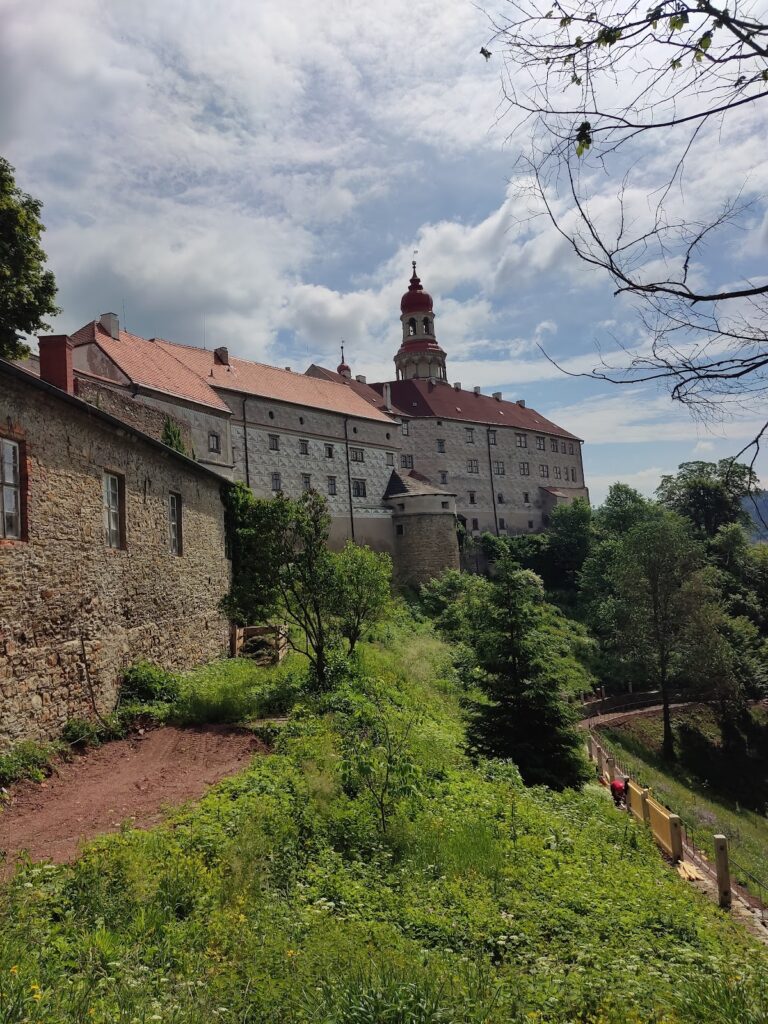Choustníkovo Hradiště: A Historic Castle in the Czech Republic
Visitor Information
Google Rating: 4.1
Popularity: Very Low
Google Maps: View on Google Maps
Country: Czechia
Civilization: Unclassified
Remains: Military
History
Choustníkovo Hradiště is a historic castle situated in the municipality of Choustníkovo Hradiště in the Czech Republic. Its origins trace back to the early 1300s, built during a period of medieval castle construction in Bohemia. The first known document mentioning the site appears in 1316, when King John of Luxembourg used the neighboring town of Dvůr Králové and its surrounding lands as collateral in a pledge to Půta of Turgov.
The castle’s ownership changed hands multiple times through the 14th and 15th centuries. In 1382, it came under the control of the Krušina brothers from Lichtenburk. Shortly afterward, Heřman of Choustník took possession and expanded the fortress. His family maintained ownership until 1410. The following centuries saw frequent transfers of control, reflective of the often turbulent political landscape in the region during the 15th and 16th centuries.
During the Thirty Years’ War, between 1636 and 1651, the estate was under Danish Count František of Ulfeld. In 1645, the castle suffered significant damage when Swedish forces commanded by General Torstenson captured and destroyed it amid military campaigns in Bohemia. After the conflict, the ruined property was inherited by František’s brother, Korfic of Ulfeld, and subsequently passed through several other owners.
A major restorative effort was undertaken following 1664 when Count Jan Špork acquired the damaged castle. He initiated repairs that stabilized the structure. Jan Špork’s son, František Antonín Špork, transformed the site into a monastery for women belonging to the Celestine religious order after 1705. Leadership of the monastery initially fell to Špork’s daughter, and later to the Countess of Rutland. This religious community remained here until 1739, when the nuns moved to Prague.
Following the departure of the Celestines, the castle grounds briefly served agricultural uses. However, over time the complex fell into decay. Stones from the buildings were repurposed as construction materials locally. Since 1964, the ruins have been protected as a cultural monument, recognizing their historical significance and vestiges of medieval and early modern heritage.
Remains
The castle of Choustníkovo Hradiště was constructed as a defensive complex comprising three primary sections set on a prominent hill. Its eastern side offered the most accessible approach and was protected by a moat, reflecting medieval fortification practices to hinder attackers.
The outermost part was an elongated, rectangular enclosure known as the outer bailey. This area served mainly defensive purposes, forming the first line of protection. Within the outer bailey, attached moats and earthen ramparts reinforced its defenses, including a rampart extending southwest from the bailey’s corner.
Adjacent and beyond this lay a second rectangular bailey, also fortified by a moat and rampart system. On each side of this inner enclosure stood buildings whose origins are not clearly dated, indicating either medieval or later construction phases. Their exact functions remain uncertain, suggesting they may have been auxiliary structures supporting the castle’s operations.
Beyond the third moat was the castle’s central stronghold, referred to as the castle core. It is typologically described as a bergfried-type castle, meaning it featured a tall, heavily fortified tower used mainly for refuge and defense rather than residence. Today, most of the structures in this core survive only as earthworks, with the stone and mortar largely lost to time.
Within the core’s western corner once stood the palace, notable for its barrel-vaulted cellar, a vaulted underground chamber providing sturdy storage space. The bergfried tower itself was positioned in the northeast corner, embodying the strategic focus of the castle’s defensive plan. Additional buildings were located along the fortified perimeter walls, outlining a defensive circuit around the core.
Currently, the remains of Choustníkovo Hradiště are primarily foundation outlines, earth mounds, and partial wall fragments. They stand in situ on the original site and are accessible for viewing though no official marked paths lead directly to the ruins. Nearby villages are connected by regional cycling routes, highlighting the site’s setting within the broader landscape.
The preservation of these earthworks and surviving ruins provides valuable insight into the castle’s layered development, its role in medieval and early modern history, and the architectural strategies employed to defend settlements in the Czech lands.










